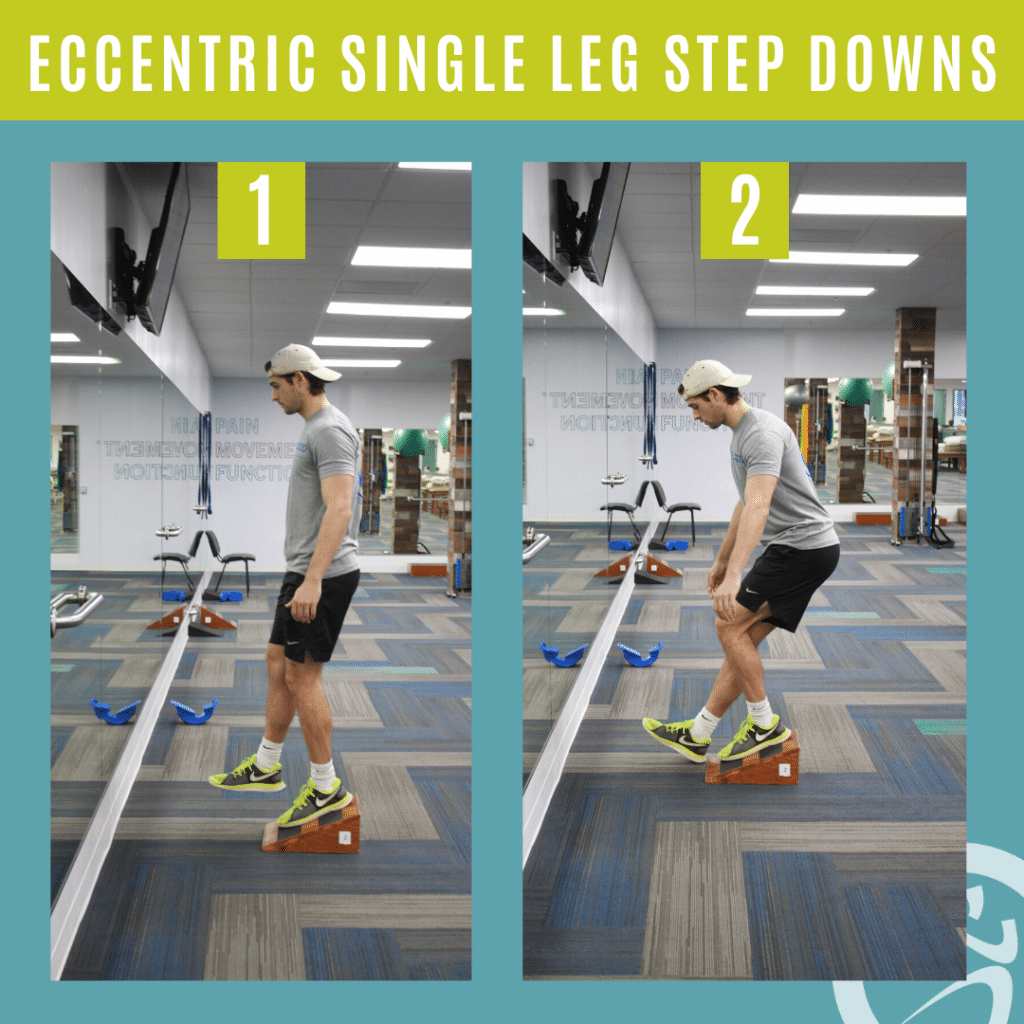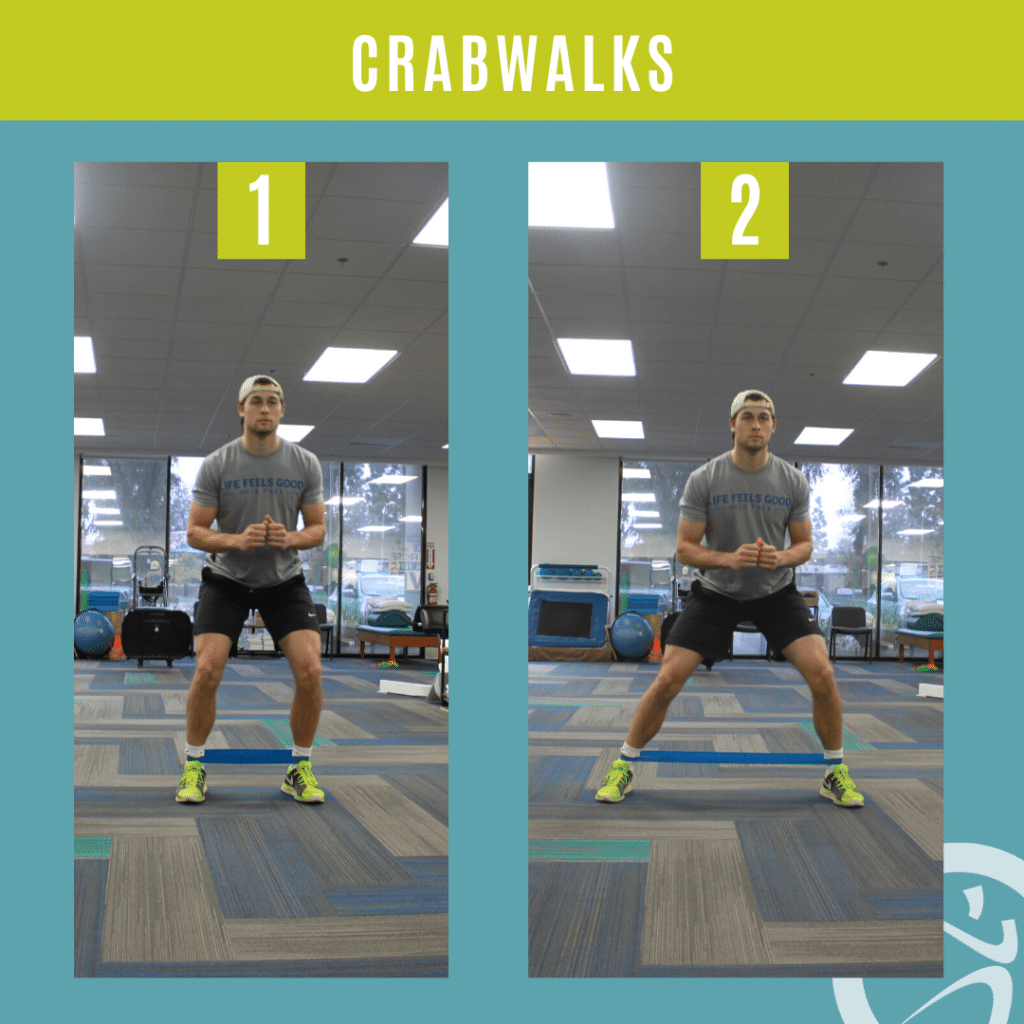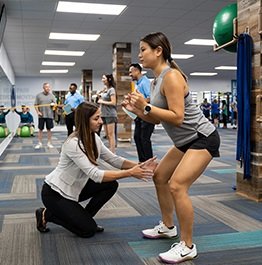
Quick Tips to Treat Jumper’s Knee
November 07, 2019Background
Did you ever play basketball or go out for running that resulted in having pain in the knee that’s just below the kneecap? If that’s you, you may have something called a “Jumper’s Knee”. However, don’t be alarmed because jumper’s knee is treatable by a physical therapist!
The reason for the name is because this occurs from sports that require repetitive jumping or from running. Another word for jumper’s knee is “patella tendinitis”, which means inflammation of the tendon. The pain tends to be located in front of the knee and right below the knee cap. With repetitive movements, it causes the patella tendon to be strained, resulting in micro-tears, and possibly even lead to collagen degeneration may occur in the tendon. But before you try physical therapy, you can try these quick home self-treatments and see if your pain will go away.
Home Self-Treatments
Improving Muscle Movement
- Place a foam roller on the front part of the thigh by laying on the floor.
- Using slow and steady movements, roll between the bottom and top of the thigh.
- Target the front part of the quadriceps and the iliotibial band (outside of the thigh).
Perform for 3-5 minutes on each leg.

Quadriceps Stretch
Can be performed in standing or laying position.
- If standing, hold onto something for balance, and bend the knee and pull the foot towards your buttocks with your arm.
- You should feel the stretch on the front part of your thigh. It’s important to keep the quad length at its optimal length (heel touching the buttocks).
Perform the exercises 3 times for 30 seconds.

Eccentric Single Leg Step Downs
- Perform on a slant board or a half foam roller to have the heels raised about 2-3 inches.
- This exercise is to be performed slow and steady with controlled movements.
- Making sure the knee is aligned with your 2nd toe, slowly start to perform a partial squat of 3-6 inches, while making sure that your knee is aligned with the 2nd toe and not passing in front of the toes as you lower your hip.
Perform 3 sets of 20 repetition. Take your time to have quality with this exercise due to the importance of it.

Side Lying Clams
- Placing resistance bands above both knees and laying on your side.
- Bend both knees and bring them forward while making sure the torso, hips, and feet are aligned.
- Open up the knee on top like a clam, while making sure that the two hips are stacked perfectly in a vertical line at all times.
- Increase resistance as progression occurs.
Perform 3 sets of 10 repetition

Crabwalks
- Placing resistance bands around the ankles, slightly bend both knees and keep your toes pointed straight at all times.
- Continue by walking sideways with both knees slightly bent.
- Increase resistance as progression occurs.
Perform 3 sets of taking 10 steps to the side and back.

If you are still having jumper’s knee pain after some time, there may be other reasons causing the issues; such as poor body mechanics, imbalances in the body, or incorrect training methods. I would highly recommend coming to your local Coury & Buehler Physical Therapy clinic, so a physical therapist can personally assess and get you back to a pain-free life!
REQUEST A FREE CONSULTATION
We will contact you to confirm your appointment.WANT MORE TIPS?
Diego loves to watch football and basketball, especially his Lakers. In his spare time, he enjoys working out and playing basketball, trying new restaurants, and discovering new cultures while traveling.
Latest posts by Diego Kim, PT, DPT (see all)
- 5 Things That Happen When You Stop Working Out - January 02, 2020
- Quick Tips to Treat Jumper’s Knee - November 07, 2019
- How Can Exercise Help Manage Stress? - July 13, 2018
Reader Interactions
Leave a comment Cancel reply
You must be logged in to post a comment.
SIGN UP FOR
LIFE+ is a FREE membership
that offers:
• Informative Newsletters
• Health & Wellness Tips
• Videos from Our Experts
• Special offers
…and much more!
SEARCH

GET MORE TIPS! PAIN 101 TUTORIALS
EXPLORELATEST TWEETS
ARCHIVES
- February 2025
- August 2024
- February 2024
- November 2023
- September 2023
- July 2023
- June 2023
- January 2023
- November 2022
- October 2022
- September 2022
- August 2022
- July 2022
- June 2022
- May 2022
- April 2022
- March 2022
- December 2021
- November 2021
- October 2021
- September 2021
- August 2021
- July 2021
- June 2021
- April 2021
- March 2021
- February 2021
- January 2021
- December 2020
- November 2020
- October 2020
- September 2020
- August 2020
- April 2020
- March 2020
- February 2020
- January 2020
- December 2019
- November 2019
- October 2019
- September 2019
- August 2019
- July 2019
- June 2019
- May 2019
- April 2019
- March 2019
- February 2019
- January 2019
- November 2018
- September 2018
- August 2018
- July 2018
- June 2018
- May 2018
- April 2018
- March 2018
- February 2018
- January 2018
- December 2017
- November 2017
- October 2017
- September 2017
- August 2017
- July 2017
- June 2017
- May 2017
- April 2017
- March 2017
- February 2017
- January 2017
- December 2016
- November 2016
- October 2016
- September 2016
- August 2016
- July 2016
- June 2016
- May 2016
- April 2016
- March 2016
- February 2016
- January 2016
- December 2015
- November 2015
- October 2015
- September 2015
- August 2015
- July 2015
- June 2015
- May 2015
- April 2015
- March 2015
- February 2015
- January 2015
- December 2014
- November 2014
- October 2014
- September 2014





